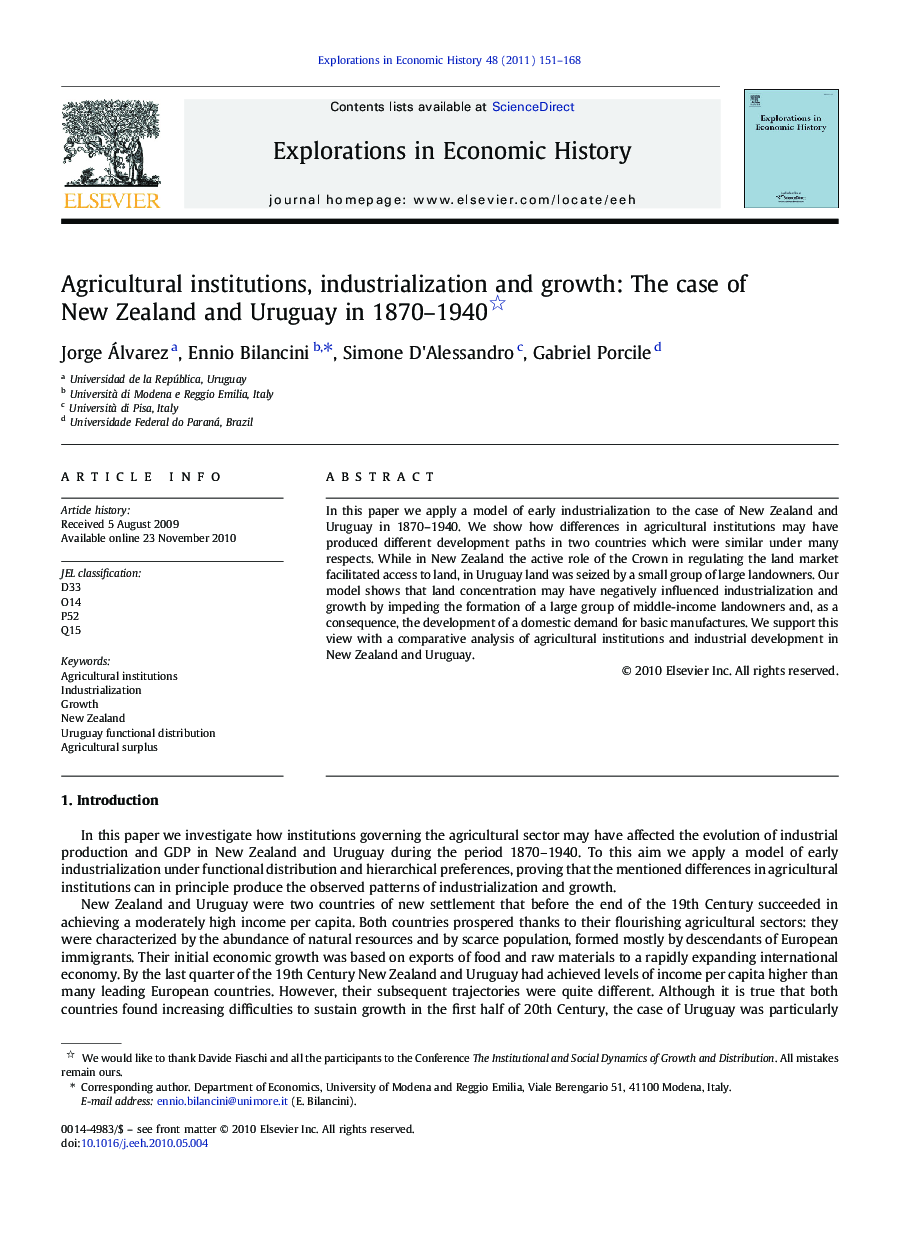| Article ID | Journal | Published Year | Pages | File Type |
|---|---|---|---|---|
| 5068877 | Explorations in Economic History | 2011 | 18 Pages |
In this paper we apply a model of early industrialization to the case of New Zealand and Uruguay in 1870-1940. We show how differences in agricultural institutions may have produced different development paths in two countries which were similar under many respects. While in New Zealand the active role of the Crown in regulating the land market facilitated access to land, in Uruguay land was seized by a small group of large landowners. Our model shows that land concentration may have negatively influenced industrialization and growth by impeding the formation of a large group of middle-income landowners and, as a consequence, the development of a domestic demand for basic manufactures. We support this view with a comparative analysis of agricultural institutions and industrial development in New Zealand and Uruguay.
